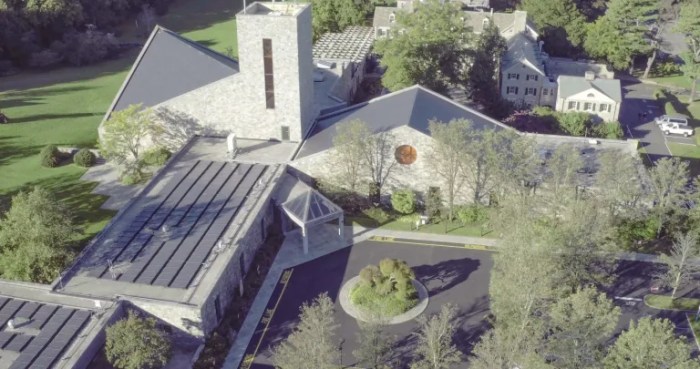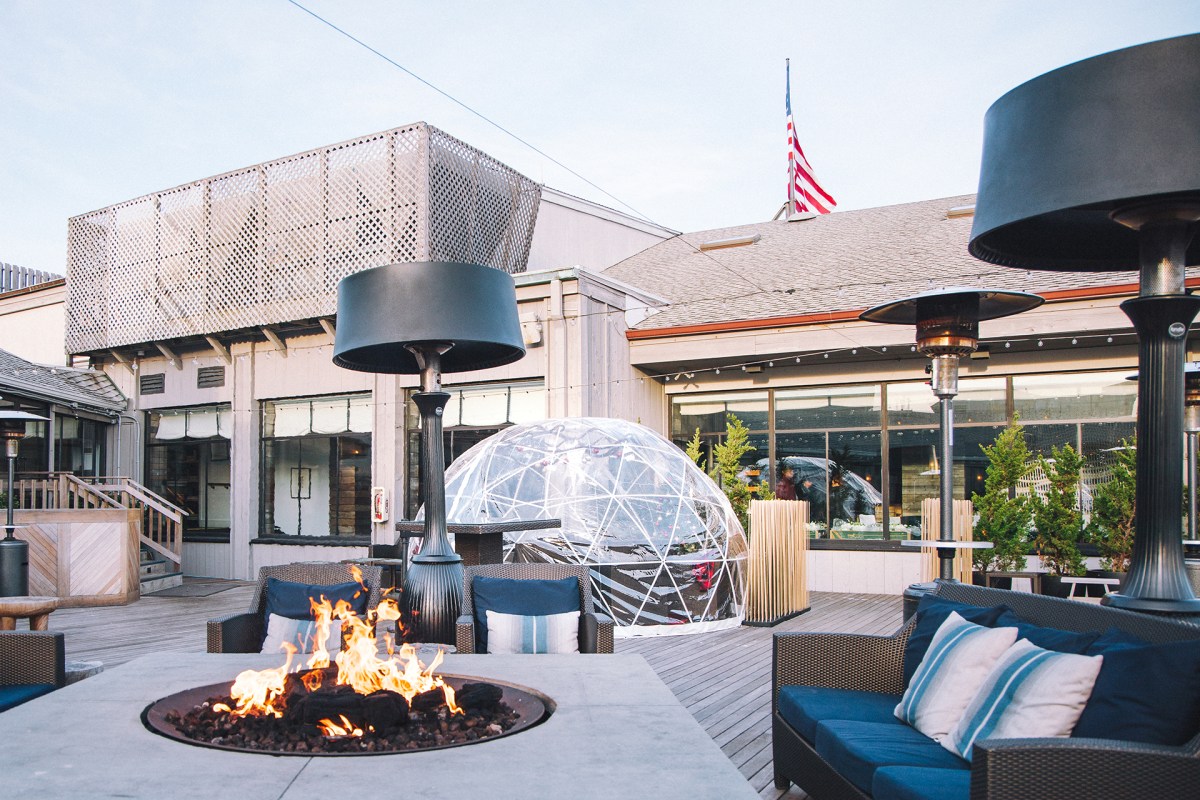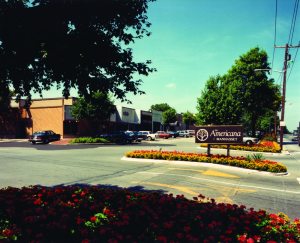 The history of the Miracle Mile as a shopping destination is many-layered. Northern Boulevard in Manhasset, where it is located, began as a simple trail, where Matinecock and Manhasset Indians hunted and traded. Early settlers with large holdings and farmlands in the 17th and 18th century, tradesmen and merchants in the 19th century, prepared the way for the explosive growth in the 20th century of the prosperous Manhasset we know today. It is not too far-fetched to claim that this area has always attracted the privileged whether they were significant landowners or entrepreneurs. The hard work and vision needed to succeed in a competitive environment has been evident throughout Manhasset’s history.
The history of the Miracle Mile as a shopping destination is many-layered. Northern Boulevard in Manhasset, where it is located, began as a simple trail, where Matinecock and Manhasset Indians hunted and traded. Early settlers with large holdings and farmlands in the 17th and 18th century, tradesmen and merchants in the 19th century, prepared the way for the explosive growth in the 20th century of the prosperous Manhasset we know today. It is not too far-fetched to claim that this area has always attracted the privileged whether they were significant landowners or entrepreneurs. The hard work and vision needed to succeed in a competitive environment has been evident throughout Manhasset’s history.
In 1801, North Hempstead Turnpike (what is now Northern Boulevard) was a toll road and the main artery connecting all the farmlands and holdings of a succession of Dutch and English settlers. This turnpike cut through an area called the Valley, just at the head of Manhasset Bay and Mitchell’s (Whitney’s) Pond. There were butchers, innkeepers, barbers, doctors, and blacksmiths. There were hotels, restaurants, grocery stores, and saloons. Throughout the 19th century, the area thrived with the bustle of commerce and trade serving the needs of travelers passing through as well as the local community.
One can assume that with the opening of Jaffe’s department store in 1903 in the Valley, a tradition began of catering to well-heeled and famous people. It is said that actors Fred Astaire, and Leslie Howard, residents of the area at the time, patronized the store. Sightings of Theodore Roosevelt’s sons shopping were not uncommon. In effect, Jaffe’s department store was the precursor of the latest inhabitant of the area, Macy’s, which may very well anchor the westernmost corner of Manhasset’s renowned Miracle Mile.
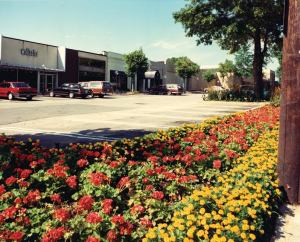 Meanwhile, farther east, a tranquil village founded in 1680 and referred to as the Hill, slowly began to grow. With the arrival of the railroad in the latter part of the 1880s, the influx of tradesmen from the Valley, and a building boom around the churches, the Town Hall, and the school, Manhasset laid the groundwork for the thriving town it became. Eventually, by the first decades of the 20th century, business had definitely shifted from the Valley to the Hill and Manhasset became a commuter town. After weathering the Depression and World War II, a more mobile population and increased vehicular congestion both in urban spaces and suburban main streets, gave the impetus for the rapid development of stores and shopping centers in areas adjacent to towns.
Meanwhile, farther east, a tranquil village founded in 1680 and referred to as the Hill, slowly began to grow. With the arrival of the railroad in the latter part of the 1880s, the influx of tradesmen from the Valley, and a building boom around the churches, the Town Hall, and the school, Manhasset laid the groundwork for the thriving town it became. Eventually, by the first decades of the 20th century, business had definitely shifted from the Valley to the Hill and Manhasset became a commuter town. After weathering the Depression and World War II, a more mobile population and increased vehicular congestion both in urban spaces and suburban main streets, gave the impetus for the rapid development of stores and shopping centers in areas adjacent to towns.
In his book, Main Street to Miracle Mile, American Roadside Architecture, Chester Liebs clearly articulates the proliferation of these shopping areas as well as the origin of the term “Miracle Mile.”
“In many cities, this almost instantaneous transformation of some stretch of highway at the edge of town into a bustling shopping corridor was viewed by a society long conditioned by depression and war as an economic event of miraculous proportions. Taking their cue from the now famous stretch of Wilshire Boulevard in Los Angeles called the Miracle Mile because of the way it boomed with interwar commercial development, speculators and town fathers across the country were often quick to celebrate their own example of commercial magic. Soon the term “Miracle Mile” became the local synonym for busy roadside trading places from Manhasset, Long Island, and Pittsfield, Massachusetts, all the way to Phoenix, Arizona.”
The New York Times, in a May 13, 1951 article stated that the Manhasset Miracle Mile, “…is so named because in the last three years branches of most large New York department stores, jewelers, florists, specialty shops have been established there to give it a touch of Fifth Avenue.” While it is true that a whiff of Fifth Avenue blew into the Manhasset community, the first branch store of the oldest upscale specialty-retail department store chain in the United States, Lord and Taylor, opened much earlier, in 1941, on the corner of Shelter Rock Road and Northern Boulevard. The store is still there today on land that was originally owned by the Schenck family, early settlers of Manhasset.
As stated in The New York Times obituary dated July 31, 1973, Sol G. Atlas, a noted real estate developer and builder, was credited with constructing the Miracle Mile in Manhasset. In this space, he not only erected a hospital complex, but also several additional building meant for occupancy by branches of renowned New York retail stores. Plans began in 1947, and on August 6, 1950 The New York Times reported that, “His latest business development, now in its final closing stages, is the Miracle Mile in Manhasset, Long Island, where he has constructed suburban branch stores for a number of Fifth Avenue shops.” In a later article dated September 3, 1950, The New York Times stated that, “Miracle Mile extends along Northern Boulevard from Shelter Rock Road to Port Washington Boulevard. Among the well-known stores having branches there are Lord and Taylor, B. Altman’s, Best and Co., W. & J. Sloane, Mary Lewis, Black, Starr & Gorham, Rose Marie de Paris, David’s of Fifth Avenue, Caro’s Restaurant, Guy and Guy, Leong’s Restaurant, the Yardstick, and Fred Astaire Dance Studios. With the exception of the Lord and Taylor branch, all the stores were built by Mr. Atlas.”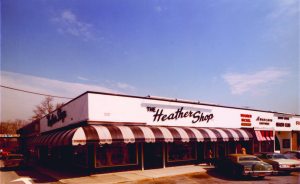
The Miracle Mile, east of Shelter Rock Road, is interrupted midway by some residential properties that make up part of the Villages of Strathmore Vanderbilt, South Strathmore, and Strathmore Village which are mostly located behind the stores and parking lots. All these Strathmore villages, including North Strathmore, on the northern side of Northern Boulevard, were developed by Levitt and Sons during the 1930s and the 1940s. In 1956, Mr. Frank Castagna, bought the site of the future Americana Manhasset from William Levitt. In the beginning, the area had a mix of stores like The Magic Pan, J. J. Newberry, a movie theatre, as well as Hirshleifer’s department store, opened in 1960, which was the precursor of the upscale revitalization that was to follow.
It was Frank Castagna’s vision, however, to enhance the area into the “premier shopping destination on Long Island” and focus on attracting top-tier retail tenants. Today an array of luxury retailers call the Americana Manhasset home: Prada, Armani, Brooks Brothers, Ralph Lauren, Chanel, and Cartier among many others. In a May 21-27, 2010 Long Island Business News interview, Mr. Castagna spoke of the changing retail real estate industry. In the post-war years people shopped for basics. As baby boomers came of age, they were better educated and equipped with more disposable income, thus they were able to spend more easily. In later years, a different attitude toward shopping, fueled by the information age which made shoppers more savy about fashion and trends changed the character of the shopping experience. Castagna’s own deep understanding of customers as well as changing economic times, and his quiet determination, has developed the Americana Manhasset into a complete shopping destination.
Famous though it may be for catering to the privileged classes with upscale shops, a high level of service, and restaurants like Cipollini and Toku, the American Manhasset has become a towering philanthropic presence focused on local causes as well as larger scale charitable organizations. Whether he is hosting fundraising events or art exhibits, or enriching the eye with lush landscaping and outdoor sculptures, Mr. Castagna has given new meaning to shopping. His vision and philanthropy have made the American the jewel in the crown of Manhasset’s Miracle Mile.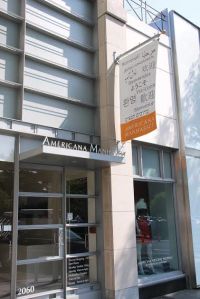
The original boundaries of the Miracle Mile on Northern Boulevard placed the Searingtown Road corner as its eastern outpost and the Shelter Rock Road corner as its western one. However, the incursion of stores farther west proceeded apace with a branch of Arnold Constable Department store, a Food Fair supermarket, and several other shops. Eventually, in 1965, a branch of Abraham and Straus lengthened the Miracle Mile to Community Drive bringing it back to the Valley, where the first commercial hub of Manhasset truly began.
In a New York Times article dated May 7, 1965, Gilbert Courtney, manager of Lord & Taylor, reportedly said, “that the Miracle Mile, which got started when his store opened there 24 years ago, was really an undefinable thing.”






